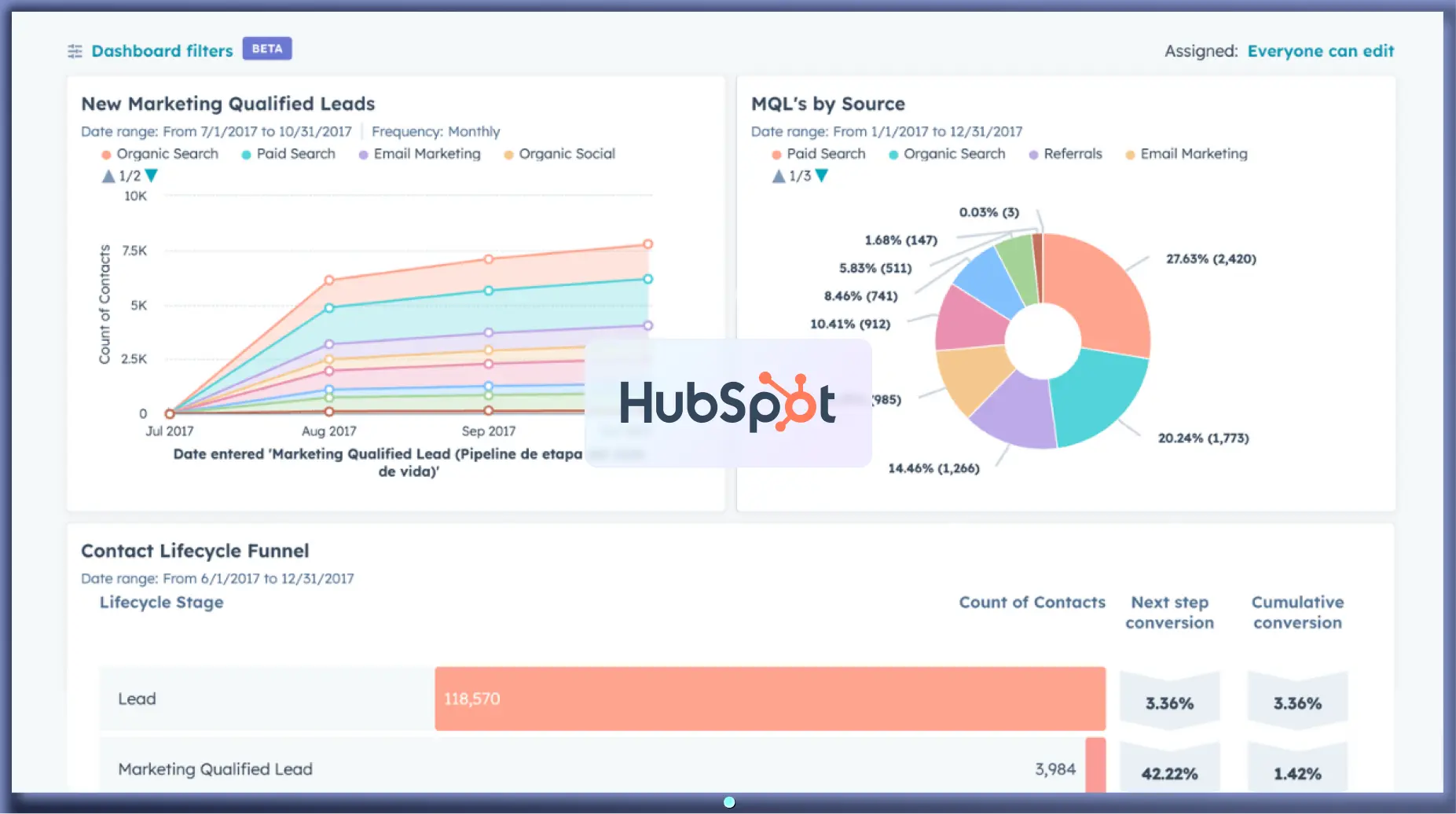HubSpot Smart Content: Complete Buyer's Guide
Strategic personalization solution for B2B organizations
HubSpot Smart Content represents a strategic personalization solution for B2B organizations seeking CRM-integrated landing page optimization within the HubSpot ecosystem. Unlike standalone AI page builders, Smart Content operates as a rule-based personalization engine that leverages contact properties, lifecycle stages, and CRM data to deliver contextually relevant experiences[48][50].
Market Position & Maturity
Market Standing
HubSpot Smart Content operates within the $715.5 million landing page builder market projected to reach $2.72 billion by 2035, representing a 14.3% CAGR[1][4].
Company Maturity
HubSpot demonstrates exceptional stability through 15+ years of operation, public trading status (NYSE: HUBS), and consistent revenue growth exceeding 20% annually[50].
Growth Trajectory
HubSpot's customer base grew 30%+ year-over-year in recent periods, with particular strength in mid-market and enterprise segments where Smart Content finds primary application[50].
Industry Recognition
Industry recognition includes consistent placement in Gartner Magic Quadrants for marketing automation and CRM platforms[50].
Strategic Partnerships
Strategic partnerships include integrations with major business platforms including Salesforce, Microsoft, Google, and hundreds of third-party applications through HubSpot's App Marketplace[50].
Longevity Assessment
Longevity assessment strongly favors continued operation and development given HubSpot's market position, financial stability, and strategic importance of personalization within the broader marketing automation platform[50].
Proof of Capabilities
Customer Evidence
EvaluAgent achieved a 30% lead increase and 20% landing page conversion lift following Smart Content implementation[49]. Kameleoon's deployment achieved a 45% landing page conversion rate alongside 4x lead growth within six months[51]. G2's systematic approach reduced cost-per-lead by 25% while maintaining lead quality[42].
Quantified Outcomes
Customer implementations consistently report conversion improvements ranging from 20-45% within 3-6 months of deployment[49][51][42]. B2B companies using Smart CTAs report an average 202% click-through rate increase compared to static alternatives[44].
Case Study Analysis
Kameleoon's global implementation leveraged language-based personalization to achieve 4x lead growth by targeting European markets with localized messaging[51]. G2's systematic approach combined A/B testing with Smart Content optimization[42].
Market Validation
Organizations report ROI timelines spanning 3-6 months with documented conversion lifts supporting business case development[49][51][42].
Competitive Wins
Smart Content's access to contact properties, lifecycle stages, and sales pipeline data enables personalization targeting impossible with behavioral-only systems[48][50].
Reference Customers
Reference customers include publicly documented implementations across B2B SaaS, marketing agencies, and global enterprises requiring multi-regional personalization[44][49][51].
AI Technology
HubSpot Smart Content operates through rule-based logic rather than machine learning algorithms[48].
Architecture
The system dynamically adapts website elements including content blocks, calls-to-action, and forms based on visitor characteristics such as device type, location, lifecycle stage, or list membership[48].
Primary Competitors
Primary competitors include standalone AI landing page builders like Unbounce, Instapage, and Wix ADI[36][39][5].
Competitive Advantages
Competitive advantages center on CRM integration depth unavailable in standalone solutions[48][50].
Market Positioning
Market positioning establishes Smart Content as personalization feature rather than standalone AI builder[48][50].
Win/Loss Scenarios
Win/loss scenarios favor HubSpot Smart Content for organizations prioritizing CRM integration over advanced AI capabilities[48][50].
Key Features

Pros & Cons
Use Cases
Integrations
Pricing
Featured In Articles
Comprehensive analysis of AI Landing Page Builders for AI Marketing & Advertising for AI Marketing & Advertising professionals. Expert evaluation of features, pricing, and implementation.
How We Researched This Guide
About This Guide: This comprehensive analysis is based on extensive competitive intelligence and real-world implementation data from leading AI vendors. StayModern updates this guide quarterly to reflect market developments and vendor performance changes.
55+ verified sources per analysis including official documentation, customer reviews, analyst reports, and industry publications.
- • Vendor documentation & whitepapers
- • Customer testimonials & case studies
- • Third-party analyst assessments
- • Industry benchmarking reports
Standardized assessment framework across 8 key dimensions for objective comparison.
- • Technology capabilities & architecture
- • Market position & customer evidence
- • Implementation experience & support
- • Pricing value & competitive position
Research is refreshed every 90 days to capture market changes and new vendor capabilities.
- • New product releases & features
- • Market positioning changes
- • Customer feedback integration
- • Competitive landscape shifts
Every claim is source-linked with direct citations to original materials for verification.
- • Clickable citation links
- • Original source attribution
- • Date stamps for currency
- • Quality score validation
Analysis follows systematic research protocols with consistent evaluation frameworks.
- • Standardized assessment criteria
- • Multi-source verification process
- • Consistent evaluation methodology
- • Quality assurance protocols
Buyer-focused analysis with transparent methodology and factual accuracy commitment.
- • Objective comparative analysis
- • Transparent research methodology
- • Factual accuracy commitment
- • Continuous quality improvement
Quality Commitment: If you find any inaccuracies in our analysis on this page, please contact us at research@staymodern.ai. We're committed to maintaining the highest standards of research integrity and will investigate and correct any issues promptly.